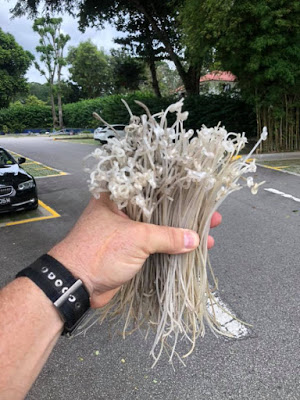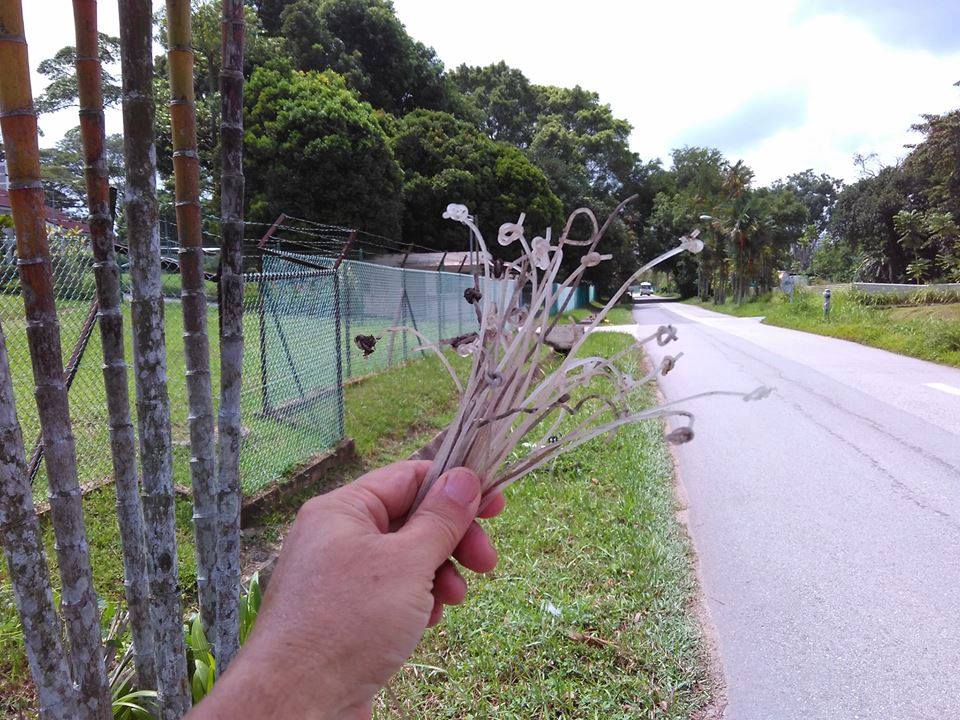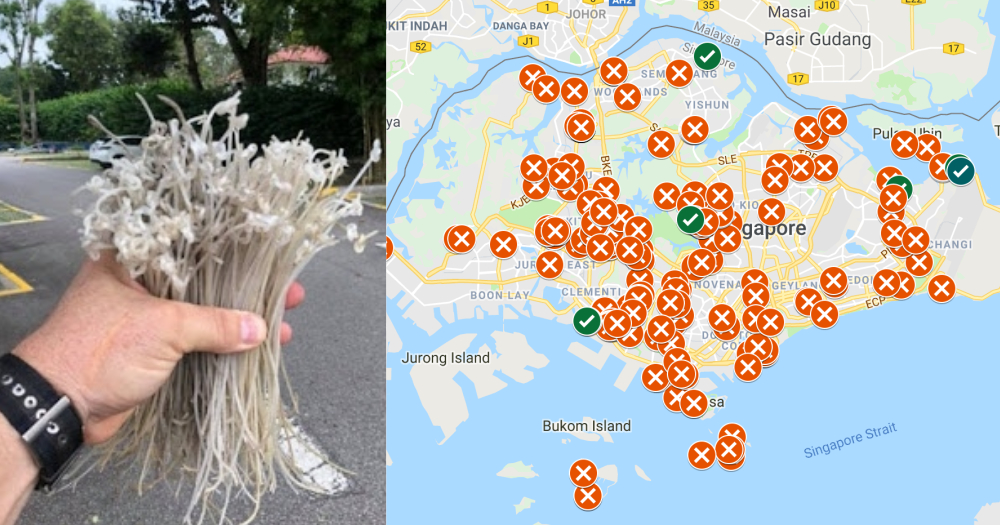Years ago, grass cutting machines in Singapore switched from using metal (killer) blades to slightly safer nylon cable ties — the genius tool best known in Singapore for securing our MRT power rail components.
But it seems no one's really been exercising purview over how these nifty strings are disposed of once a grass cutter is done with the many patches of green all over the island.
Enter Singaporean nature enthusiast Ria Tan, who since August 2018 has been updating a running photo album on Facebook that compiles sightings of cable tie litter shared by members of the public, throughout Singapore.
They're small, but they do add up
Now, you might think this is a rather mundane waste of a person's time, but a look at the pictures from the album may help you recognise the scale at which this is happening.
Tan notes that in a period of just three months (August - October 2018), close to 3,000 nylon cable ties were left behind at random locations by grass cutters — and that count is only for the ones that were spotted and picked up.
In just one hour at Changi Sailing Club (arguably one of the furthest, most remote locations in Singapore that exist), for instance, a member of the public picked up 293 cable ties:
 Photo from Wild Shores of Singapore.
Photo from Wild Shores of Singapore.
One contributor, named Tang Hung Bun, also suggested that some of these could well have ended up buried under the soil.
Tang shared this along with the photo below taken last August:
"Today (3 Aug 2018) along the same 200m stretch of Loong Chencharu, but on the opposite side of the road as yesterday, I picked up 33 nylon strings, more than double as yesterday. This is because I am now better at spotting the half-buried ones, and not that there are actually more nylon strings on one side of the road than the other."
 Photo by Tang Hung Bun via Wild Singapore's album.
Photo by Tang Hung Bun via Wild Singapore's album.
64 nylon strings were also found on Pulau Semakau (yes, even that far out) last November by a group of visitors.
 Photo by Heng Jie Min and team via Ria Tan's map.
Photo by Heng Jie Min and team via Ria Tan's map.
From these sightings, Tan observed that these strings were mainly found on narrow street-side grass verges, central road dividers and near drain gratings.
Ironically, even more were picked up in nature parks and sites like the Botanic Gardens (66), Bukit Timah Nature Reserve (65) and the green corridor (75).
She notes also that they might be washed into waterways in heavy rain or break down into microplastics in the long run.
Here are the sightings she mapped:
 Screenshot from grass cutter plastic string map.
Screenshot from grass cutter plastic string map.
The map also showed that there are some areas like Jurong West, Lim Chu Kang and Paya Lebar that volunteers haven't yet checked, hence the lack of sightings (the three circled areas).
From the map, only five locations were found to be free from cable tie litter — Changi beach, Changi Creek, Pasir Ris Park, West Coast Park and Windsor Nature Park.
That being said, the presence of cable-tie-free locations proves there really isn't any excuse to litter them all over.
Support from NParks
Tan wrote a letter to NParks and the Municipal Service Office (MSO) last November to highlight these ubiquitously-littered nylon strings.
In reply to her, NParks expressed appreciation to members of the public who shared the sightings and helped pick them up. At the same time, the agency said they have also alerted the grass cutting contractors to stop littering.
It also encourages more people to flag sightings like these to them in order to help them monitor and solve the littering problem.
In the future, NParks said it is also considering converting grass areas to Nature Ways, which mimic the structure of a forest.
These will provide greater connectivity and habitats for fauna and flora in Singapore.
At the moment, there are 18 nature ways across the island that span an 18km distance — NParks aims to increase this distance tenfold by 2030.
Nice.
Top photo collage from Ria Tan's album and map
If you like what you read, follow us on Facebook, Instagram, Twitter and Telegram to get the latest updates.
